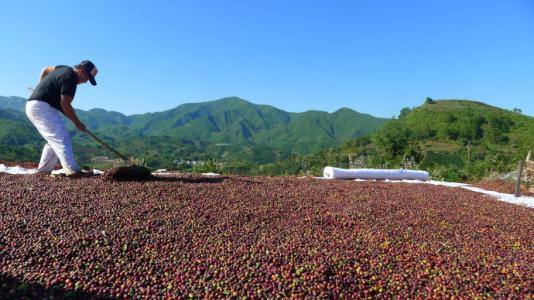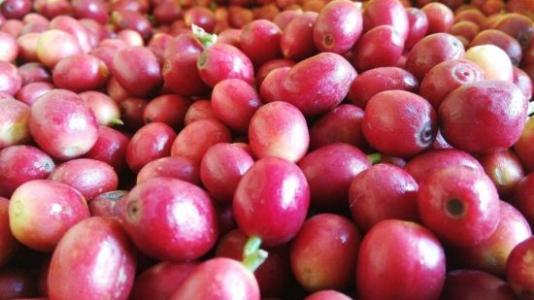A brief description of how to brew the taste and flavor of Yunnan small-grain coffee planting technology
A brief description of how to brew the taste and flavor of Yunnan small-grain coffee planting technology
Some secondary stems are produced within one or two years after the young coffee trees are planted, and if these stems are retained, they can form a multi-dry tree shape, but the development of these secondary stems is irregular, which has a certain impact on the yield, so it must be reshaped. According to the branches, growth habits and fruiting habits of different varieties, as well as different environments and different management conditions, reasonable pruning forms are adopted respectively. The shaping and pruning of general small-grain coffee can be divided into two basic types: single-dry type and multi-dry type. In Luquan Tanglang, Jiaoping and other areas, due to high temperature and rain, low altitude, rapid growth of trunk branches, less second and third branches, less cutting results, and less fruit in the hidden canopy, it is appropriate to adopt multi-stem plastic surgery with one branch as the main result.
Small trees or large shrubs, 5-8 m tall, base usually much branched; old branches gray-white, nodes dilated, young branches glabrous, compressed. Leaves thinly leathery, ovate-lanceolate or lanceolate, 6-14 cm long and 3.5-5 cm wide, apex long acuminate, acuminate part 10-15 mm long, base cuneate or slightly obtuse, rarely rounded, entire or shallowly wavy, both surfaces glabrous, lower vein axils with or without small pores; midrib raised on both surfaces of leaf, 7-13 on each side of lateral veins; petiole 8-15 mm long Stipules broadly triangular, arising from the tip of the upper part of the young branch conical or awn tip, the tip of the old branch is often protruding tip, 3-6 mm long
The growth and development of coffee is closely related to climatic and environmental conditions. In the areas where the wind is strong, the temperature is high, the light is strong, and the soil is easy to dry, the axillary buds of plant branches tend to differentiate into flower buds, and the growth of branches is small, which is easy to cause premature senescence. Therefore, it is necessary to choose a place with quiet wind, high humidity and short light as a garden. Small-grain coffee is a plant that needs water and is afraid of too much water. Where the rainfall is below 1400mm, we should choose places with irrigation conditions or water conservancy facilities. The root system of coffee is very strong, and the soil drainage is poor, so drainage ditches should be added. If the soil has high sediment content and poor water conservation and fertility, mulch should be used and organic fertilizer should be applied.

Important Notice :
前街咖啡 FrontStreet Coffee has moved to new addredd:
FrontStreet Coffee Address: 315,Donghua East Road,GuangZhou
Tel:020 38364473
- Prev

Brief introduction of Columbia Huilan Coffee Bean characteristics, Taste and Flavor description method
Colombia's Huilan Coffee beans are the third (and second) coffee producer and exporter in the world, but there is no doubt that Colombia is the world's largest exporter of Arabica coffee and the largest exporter of washed beans. Such a large output is due to Colombia's unique advantages.
- Next

The difference between washed and tanned coffee beans in Kenya how to make Kenyan coffee
Description of the difference between washed and sunburned coffee in Kenya [washed Sidamo]: coffee raw bean green is grayish in some places, thick and small in some places, soft and strong acidity, mellow and sweet and spicy. It is one of the courtyard coffees in the highlands of southern Ethiopia. Unlike ordinary African coffee, Sidamo has clear acidity and smoothness.
Related
- Detailed explanation of Jadeite planting Land in Panamanian Jadeite Manor introduction to the grading system of Jadeite competitive bidding, Red bid, Green bid and Rose Summer
- Story of Coffee planting in Brenka region of Costa Rica Stonehenge Manor anaerobic heavy honey treatment of flavor mouth
- What's on the barrel of Blue Mountain Coffee beans?
- Can American coffee also pull flowers? How to use hot American style to pull out a good-looking pattern?
- Can you make a cold extract with coffee beans? What is the right proportion for cold-extracted coffee formula?
- Indonesian PWN Gold Mandrine Coffee Origin Features Flavor How to Chong? Mandolin coffee is American.
- A brief introduction to the flavor characteristics of Brazilian yellow bourbon coffee beans
- What is the effect of different water quality on the flavor of cold-extracted coffee? What kind of water is best for brewing coffee?
- Why do you think of Rose Summer whenever you mention Panamanian coffee?
- Introduction to the characteristics of authentic blue mountain coffee bean producing areas? What is the CIB Coffee Authority in Jamaica?

